Rome, June 1, 2006: Father Álvaro Corcuera, LC, giving a conference during the International Youth Encounter.
Regnum Christi from 2006 to 2014

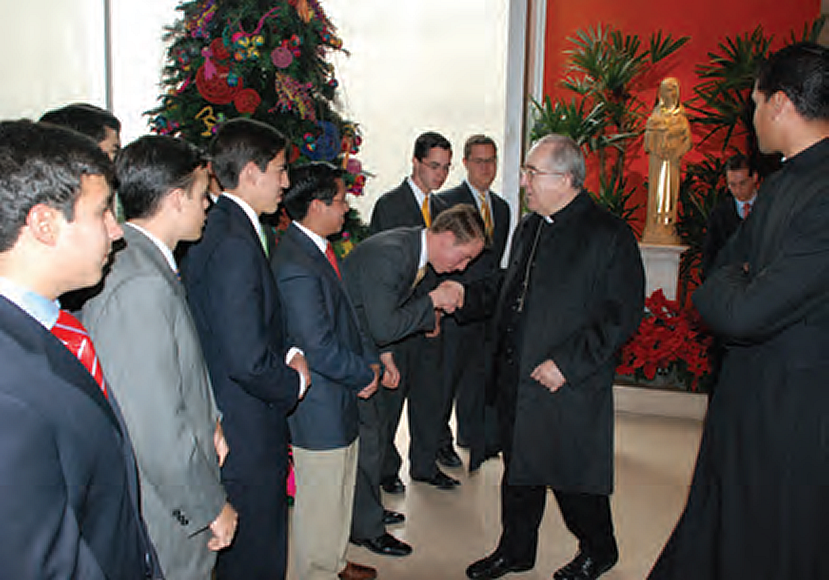
Mexico City, January 15, 2009: Cardinal Stanislaw Rylko, president of the Pontifical Council for the Laity, visiting the Center of the consecrated members of Regnum Christi in Medicina.
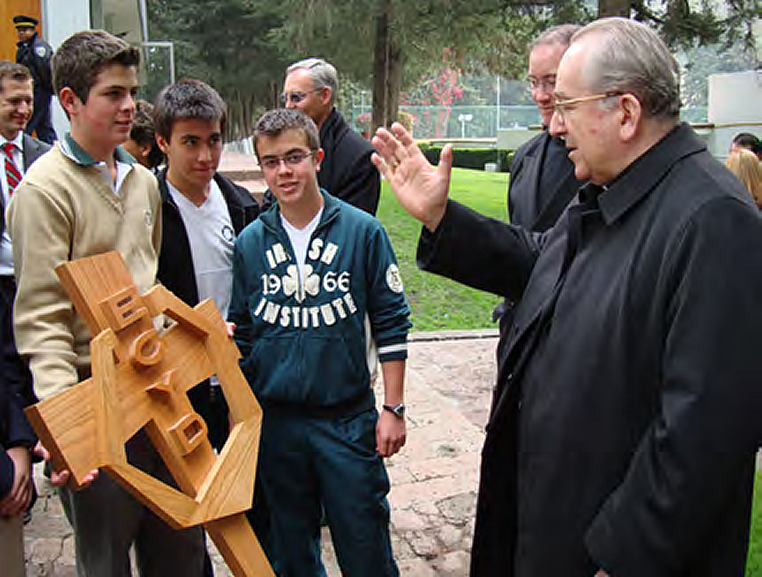
Mexico City, January 15, 2009: Cardinal Stanislaw Rylko greets the members of ECYD during a visit to the Irish Institute.
2006 – 2009
Growth of Regnum Christi
Between May 31 and June 2, 2006, the Second World Congress of Ecclesial Movements and New Communities was held in Rome, addressing the theme “The Beauty of Being Christian and the Joy of Communicating It.”
While this event, organized by the Pontifical Council for the Laity, was taking place, an International Youth and Family Encounter was held at the Pontifical Athenaeum Regina Apostolorum with the participation of thousands of members of Regnum Christi from 24 different countries: Canada, the United States, Mexico, El Salvador, Venezuela, Colombia, Peru, Brazil, Uruguay, Chile, Argentina, Spain, Ireland, England, Italy, Germany, Austria, Poland, Hungary, the Philippines, South Korea, Australia, and New Zealand.
The Movement was growing, and its members expressed the need for a text that would succinctly convey its spirituality and traditions. Thus, in 2008, the Manual of the Member of Regnum Christi was published. The epilogue of this manual states that “the authentic member of Regnum Christi, following in the footsteps of Jesus Christ, can only fulfill their mission in life by loving.”
In January 2009, Cardinal Stanislaw Rylko, president of the Pontifical Council for the Laity, personally witnessed this spirit during a visit to the sections, apostolic works, centers for the formation of the male third degree, and schools in Mexico City. There, he spent time with various members of Regnum Christi and ECYD. During a meeting at the Sierra Fría section, he said:
“These visits to the Regnum Christi centers are moments of great amazement for me because they show how many different fruits your charism is capable of generating in the lives of people and in the life of the Church. […] How many initiatives, how many projects! Anyone who listens to you would be amazed. I am truly surprised by this creativity. From the same charism come so many beautiful initiatives, and I can only congratulate you. Be truly faithful to the Holy Spirit that works in you, allowing yourselves to be guided so that it makes you grow in humanity and in your Christian vocation.”
Shortly after, a crisis related to the actions of Father Maciel began within the Movement.
First semester of 2011
The apostolic visit to the consecrated members
During the Apostolic Visit to the Legion of Christ, the consecrated members requested a visitor who would also listen to them, and on October 19, 2010, the pontifical delegate, De Paolis, announced that the visitor would be Mons. Ricardo Blázquez, Archbishop of Valladolid.
The visit took place during the first semester of 2011, and in September, Mons. Blázquez delivered the corresponding report to the pontifical delegate. In a letter dated October 15, 2011, the delegate wrote that “from the Apostolic Visit, as a positive aspect, it can be noted that on a personal level, the consecrated members are grateful for their vocation and live their consecration to God with joy according to the evangelical counsels, aware that they offer a precious service to the Church with their selflessness.”
He added that “the desire for a just autonomy is quite widespread, which the consecrated persons should enjoy, and which corresponds to them as an associative form in the Church. […] The question of autonomy is also linked to the legal nature of the group itself. […] Therefore, on one hand, it is about maintaining a bond in participation, even if differentiated, of the same charism, spirituality, and apostolate, preserving a precious treasure they have inherited, and on the other hand, finding an appropriate configuration that corresponds to canon law, to better safeguard, promote, and develop that treasure.” In the following two years, the pontifical delegate implemented this program with progressive and specific stages.
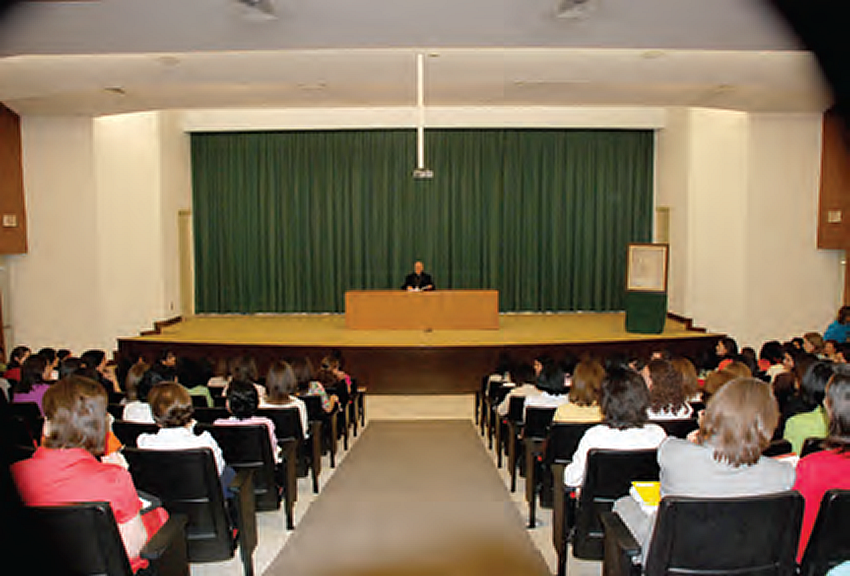
Monterrey, March 2011: Mons. Ricardo Blázquez Pérez at a moment during the Apostolic Visit to the consecrated members of Regnum Christi.
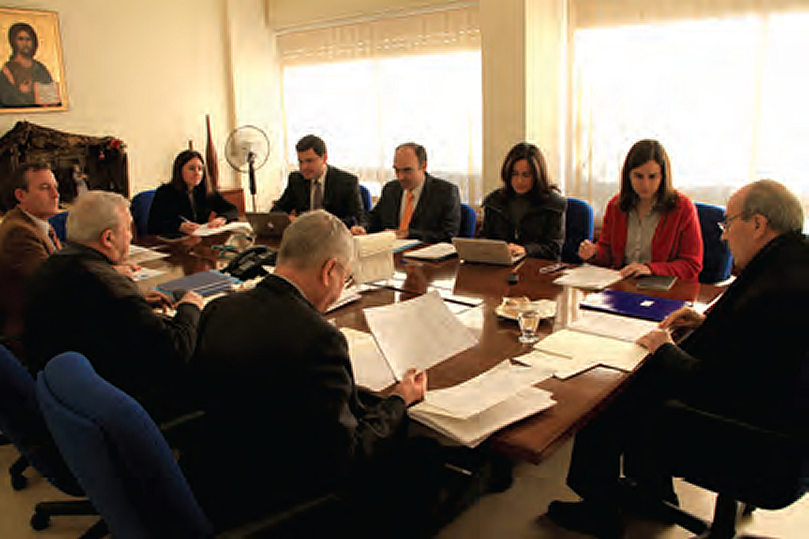
Rome, December 19, 2012: consecrated laymen and laywomen, the papal delegate De Paolis, and his collaborators in a working moment before the birth of the associations of the faithful.
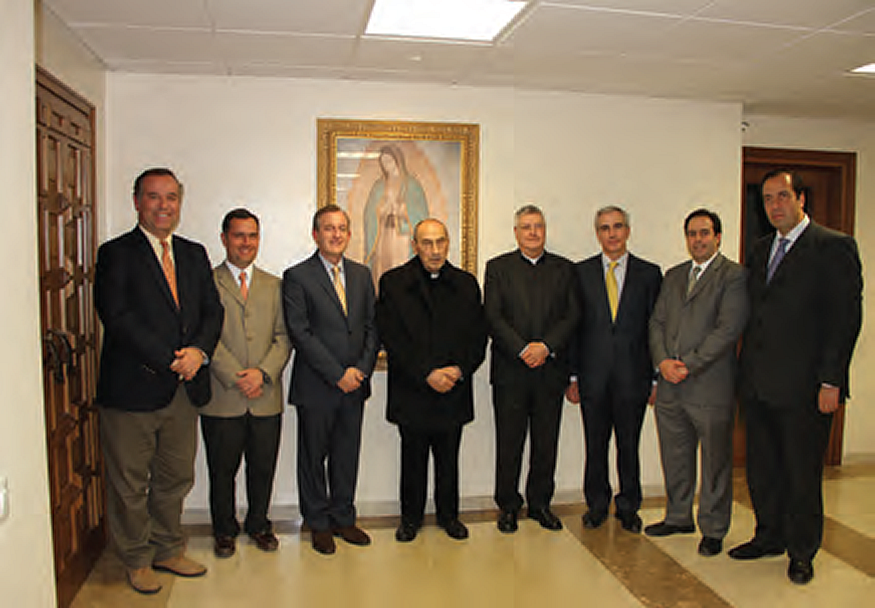
Rome, November 25, 2013: group photo during the first General Assembly of the consecrated laypeople of Regnum Christi with the papal delegate De Paolis, Father Gianfranco Ghirlanda, SJ, and the new general leadership.

Rome, December 2, 2013: a moment from the proceedings of the first General Assembly of the consecrated women of Regnum Christi.
2011 – 2013
The birth of the association of Consecrated Lay Members and Consecrated Women
In fact, in an initial phase, in October 2011, the papal delegate granted the functions previously exercised by the delegate of the general director to the general assistants of the consecrated men and women, assisted by three advisors.
The approval of all important decisions was also reserved. In February 2012, he suspended the position of the two general assistants and “in relation to the governance of internal life,” appointed Father Gianfranco Ghirlanda, SJ, as the delegate for men’s consecrated life, and Father Agostino Montan, CSI, as the delegate for women’s consecrated life, specifying that they should act according to the form of “internal governance typical of a lay faithful association.” On May 27 of the same year, he promulgated the Regulations for the consecrated members of Regnum Christi. This regulation was a provisional document that replaced the one for consecrated members in the Statutes approved in 2004. This replacement was made in light of Canon 587 §3 of the Code of Canon Law and took into account both the Statutes and regulations as well as the Principles and norms of the female Third degree members of the Regnum Christi Movement. The latter were two “very long and detailed normative texts” that “were given by Father Maciel, as the responsible for the Third degree of Regnum Christi.”
These acts were the prologue to the historic birth of an autonomous general government on June 1, 2012. Jorge López became the general head of the consecrated men, and Gloria Rodríguez became the general head of the consecrated women. In October, the Central Commission for the revision of the Statutes of the consecrated members of Regnum Christi was founded.
This commission worked until the celebration of the two General Assemblies held between November and December 2013. Its main purpose was to approve the respective foundational texts and elect the new governance structures.
Thus, on December 12, 2013, the papal delegate was able to approve ad experimentum the Statutes of the international and private association of pontifical right of the Consecrated Lay Members of Regnum Christi and the international and public association of pontifical right of the Consecrated Women of Regnum Christi, referring the definitive approval to the competent authorities. Jorge López and Gloria Rodríguez were confirmed as the general heads.
2012
The participation of members of the first and second degrees in the renewal process
Since April 2012, the Pontifical Delegate has involved members of the first and second degrees of the Movement in the renewal process.
In fact, as explained by Cardinal Velasio De Paolis in a letter dated July 11, 2012, “during this work,” he, along with Father Gianfranco Ghirlanda and Father Agostino Montan, realized “another beautiful reality of great relevance and significance, the reality of the first and second degrees of Regnum Christi, to which little and insufficient attention had been paid until this moment. The visits to Mexico, Spain, Brazil, and Chile, as well as to Italy, made by me and my advisors, have allowed us to witness with our own eyes this beautiful reality, open to hope.”
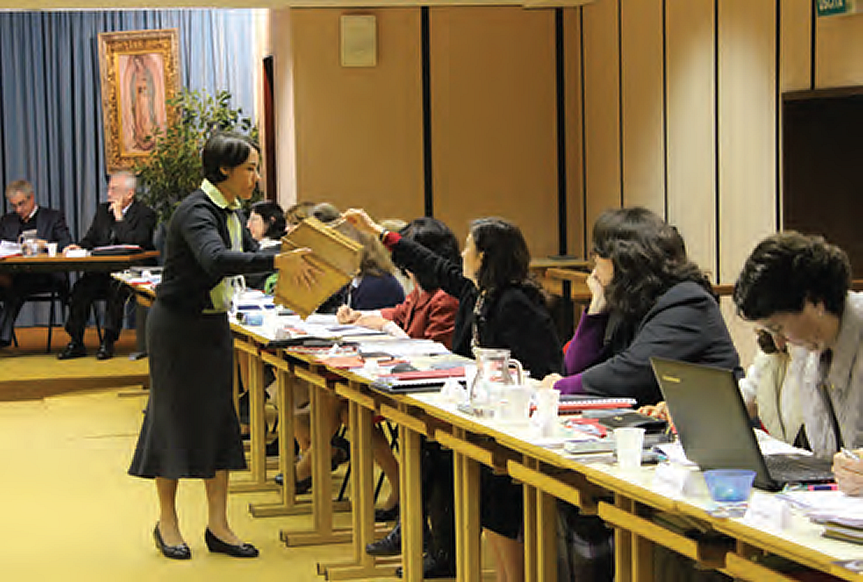
Rome, December 3, 2013: a moment from the voting of the leadership during the first General Assembly of the consecrated women of Regnum Christi.
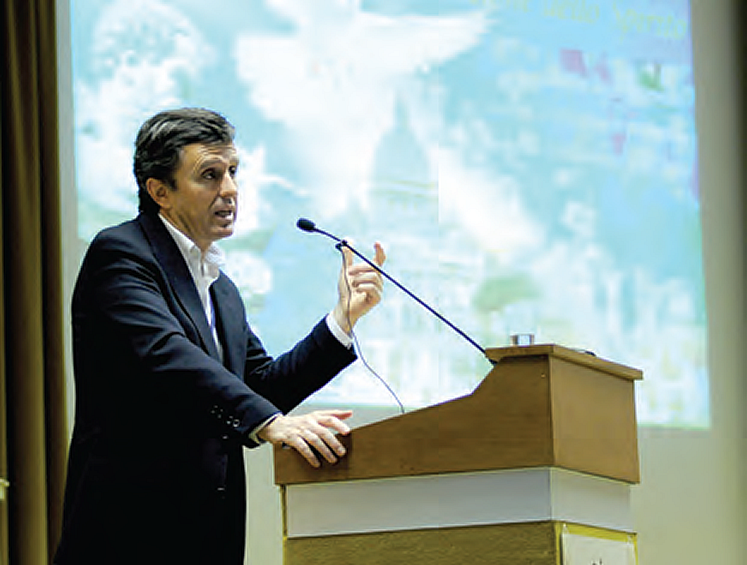
Rome, May 17, 2013: Daniel Sada, a member of Regnum Christi, during his speech at the congress “The Spring of the Church and the Action of the Holy Spirit,” at the Pontifical Athenaeum Regina Apostolorum.
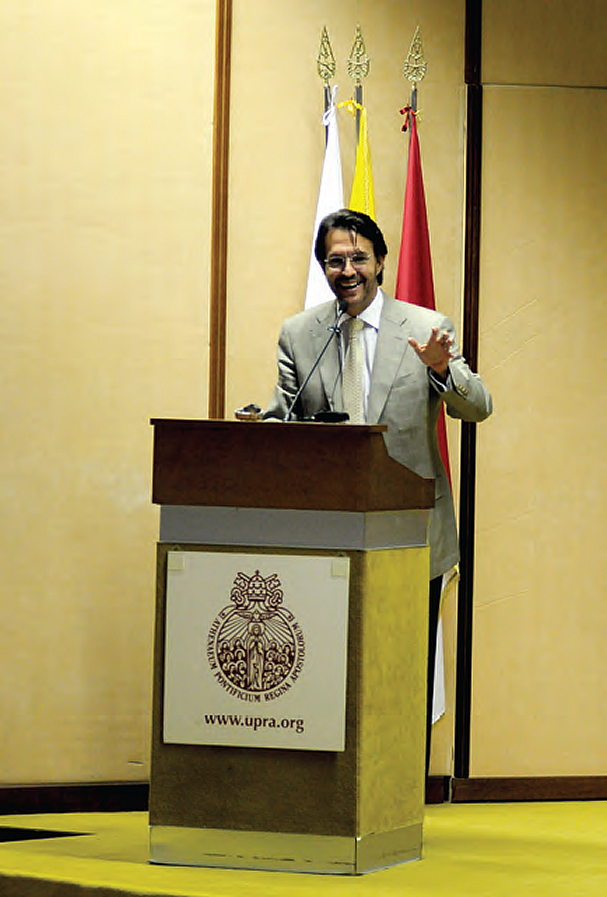
Rome, May 17, 2013: Fernando Landeros, a member of Regnum Christi, during his speech at the congress “The Spring of the Church and the Action of the Holy Spirit,” at the Pontifical Athenaeum Regina Apostolorum.
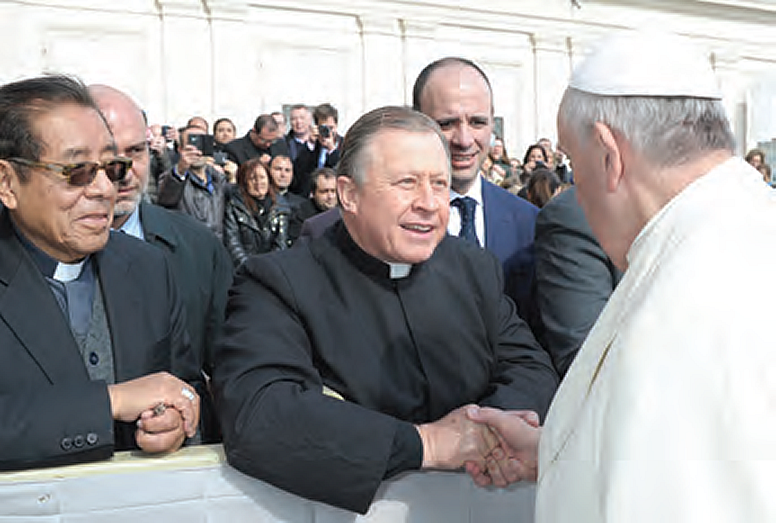
Vatican, St. Peter’s Square, February 26, 2014: first greeting of the new General Director of the Legion of Christ and Regnum Christi, Fr. Eduardo Robles-Gil, LC, with Pope Francis.

Rome, March 2014: Holy Mass at the headquarters of the General Direction during the meeting between the general governments of the Legion of Christ, the consecrated laity, the consecrated women, and representatives of the First and Second degrees of Regnum Christi.
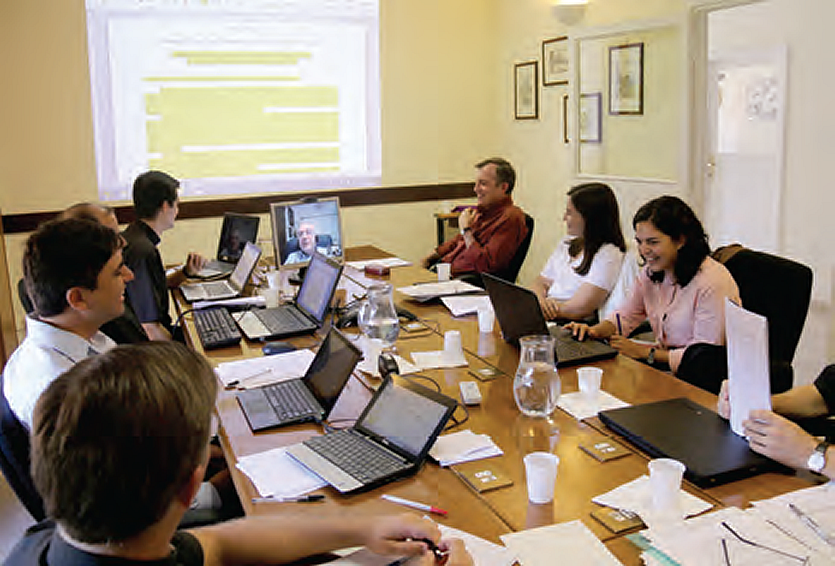
Rome, June 2, 2014: a moment from the work of the Central Commission for the revision of the General Statutes of Regnum Christi.
2012 – 2014
Regnum Christi: a charismatic and apostolic family
Starting in April 2012, the pontifical delegate involved the members of the first and second degrees of the Movement in the process of renewal.
In fact, as Cardinal Velasio De Paolis explains in a letter dated July 11, 2012, “during this work,” he, along with Father Gianfranco Ghirlanda and Father Agostino Montan, realized “another beautiful reality of great relevance and significance, the reality of the first and second degrees of Regnum Christi, to which little and insufficient attention had been paid until that moment. The visits to Mexico, Spain, Brazil, and Chile, as well as to Italy, made by me and my advisors, allowed us to see firsthand this beautiful reality, open to hope.”
This process was further framed by the delegate as a broad reflection on the Movement’s situation, stating:
“The very facts have led us to confront the complete reality committed to the proclamation and apostolate of Regnum Christi: the Congregation of the Legionaries, the Regnum Christi Movement with its lay component and its consecrated component (female and male branches). These are obviously related realities, united in the same apostolic commitment and spirituality; realities that participate in the same charism lived by each group according to its own identity: the lay identity founded on baptism, the identity of consecrated persons who live the evangelical counsels in an associative manner in the world, and that of religious priests. […] It also seems necessary to formulate a common platform on the charism and some norms that regulate the reciprocal relationships in the life of the Church and in the apostolate, according to the specific identity of each group. […] Only by reflecting on the identity and mission of the entire body and the single family will we be able to better identify the particular characteristics of each part and their mutual relationships.”
Thus, it was acknowledged that it was necessary to reflect on the various components of Regnum Christi, starting from its history, identity, spirit, and common mission, and considering the specific role of each part within the whole. For this reflection, a draft text was to be prepared, after which all members would reflect on it together. It could be said that this was an effort to draft a “general statute” or “fundamental norm” or a “common rule” for all members of Regnum Christi, including the Legionaries. The text would guide the reflection of all.
After several meetings with members from the various vocations sharing the charism, on October 19, 2012, the document titled Lineamientos del carisma del Movimiento Regnum Christi (Guidelines of the Charism of the Regnum Christi Movement) was presented, which, according to Cardinal Velasio De Paolis, was “a non-definitive text” that “does not seek to innovate anything about the charism of Regnum Christi and the parts that compose it; but to clarify it, assimilate it, and deepen it.” A significant and small novelty emerged here.
On June 16, 2010, Pope Benedict XVI mentioned a “religious family” in the letter appointing the pontifical delegate. On February 15, 2012, the same delegate explicitly referred for the first time to a “charismatic family.” In the Lineamientos of October 2012, it was stated that in Regnum Christi, the “different categories” live as “members of a single charismatic and apostolic family.”
A positive debate on this central point occurred during the congress La primavera de la Iglesia y la acción del Espíritu (The Spring of the Church and the Action of the Spirit), held in Rome in May 2013, at the Pontifical Athenaeum Regina Apostolorum, coinciding with Pope Francis’s first meeting with new ecclesial realities.
Representatives from Communion and Liberation, the Focolare Movement, the Community of St. Egidio, the Charismatic Renewal, and the Neocatechumenal Way participated to exchange contributions on the current role of movements in spreading the faith. Through round tables, the deepening of the Regnum Christi charism spontaneously emerged from the personal faith journeys and apostolic experiences of those offering their testimony.
At the end of 2013, a provisional Convenio de colaboración (Collaboration Agreement) was drafted between the different components to achieve shared management of the apostolate and administration. This agreement was to be analyzed at the new chapter of the Legion and the first Assemblies of the consecrated and consecrated women. The path toward an appropriate canonical configuration and General Statutes continued in 2014.
In July, Cardinal João Braz de Aviz, Prefect of the Congregation for Institutes of Consecrated Life and Societies of Apostolic Life, appointed Father Gianfranco Ghirlanda, SJ, Pontifical Assistant to the Legionaries of Christ, to assist the general government, particularly with this goal.
Meanwhile, a meeting of the general governments of the Congregation, consecrated men and women, along with representatives from the First and Second degrees, led to an agreement called the Marco provisional para la colaboración en la misión del Regnum Christi (Provisional Framework for Collaboration in the Mission of Regnum Christi) at the general and territorial levels. This also led to the creation of the Central Commission for the revision of the General Statute and the establishment of a General Steering Committee.
This committee began its meetings on April 1, 2014. It was the first historic unitary meeting to involve all branches of the “charismatic and apostolic family” of Regnum Christi, “through participation and co-responsibility, in the management of the Movement’s evangelizing mission.”
Finally, starting on October 2, 2014, a specific process of reflection began for members of the First and Second degrees “on their own life, spirituality, and mission as members of the Movement.”
This section has been taken from the publication «Historia Institucional de la Congregación de los Legionarios de Cristo y del Movimiento Regnum Christi» (2015), prepared by the General Historical Archive of the Legion of Christ and Regnum Christi and published on the occasion of the 75th anniversary of the Congregation. Published in Spanish and Italian.
Texts: Salvatore Luciano Bonventre | Translations: Fr. Gonzalo Franco, LC | Selection of photographs: Salvatore Luciano Bonventre and Luigi Baldassarri | Coordination: Fr. Jaime Rodríguez, LC and Fr. Rodrigo Ramírez, LC


